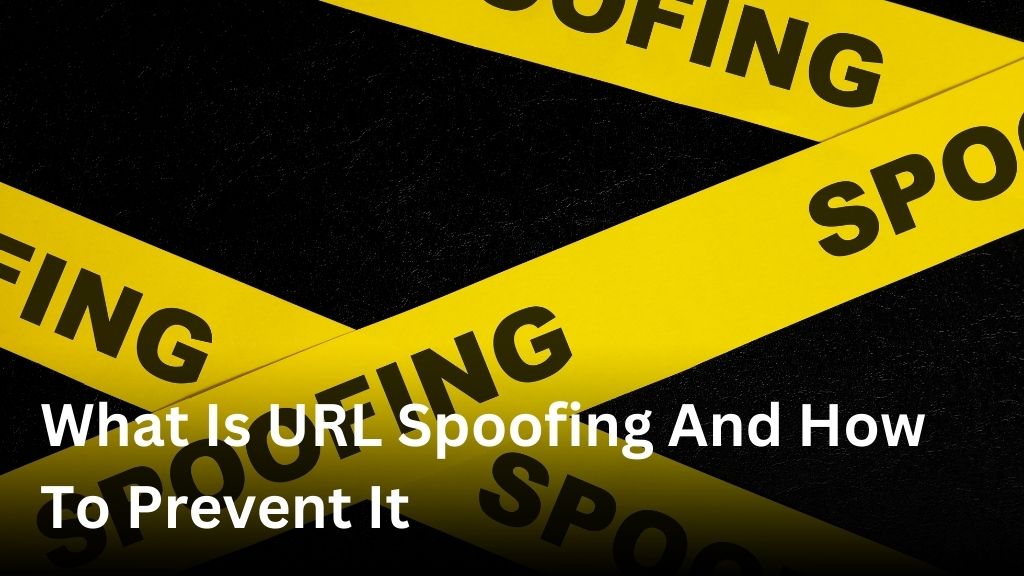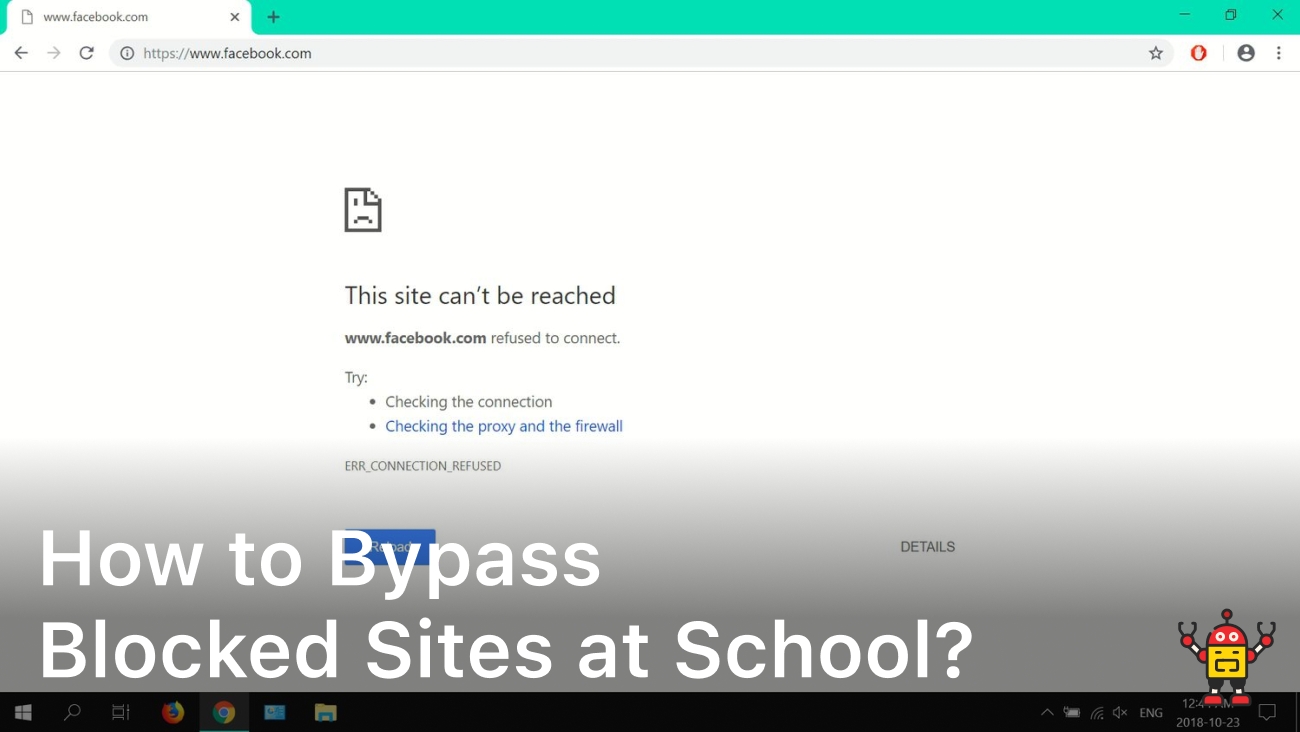Welcome to our article on URL spoofing and how to protect yourself from this deceptive cyber-attack. In today’s digital age, it’s more important than ever to stay vigilant and understand the risks we face online.
URL spoofing is a technique used by cybercriminals to deceive users and gain access to sensitive information. By manipulating website addresses, attackers create fake URLs that appear legitimate, tricking unsuspecting individuals into revealing personal data or falling for phishing scams.
In this article, we’ll delve into the definition of URL spoofing and explore real-life examples to help you recognize and avoid potential threats. Additionally, we’ll discuss common techniques used by cybercriminals and provide practical strategies to prevent URL spoofing.
By understanding the risks associated with URL spoofing and implementing preventive measures, you can safeguard your online presence and protect your valuable information from falling into the wrong hands. Join us as we explore the world of URL spoofing and equip you with the knowledge to stay safe online.
What Is URL Spoofing?

In this section, we will explore the definition of URL spoofing and provide real-life examples to help you better understand how attackers manipulate URLs to deceive users. By gaining insights into different scenarios, you can become more aware of potential URL spoofing attempts and take necessary precautions.
Definition
URL spoofing refers to the act of creating a fake website with a deceptive URL to deceive users into believing they are accessing a legitimate website. Attackers often use this technique to trick users into providing sensitive information, such as usernames, passwords, or credit card details.
Examples
Let’s consider a couple of examples to illustrate how URL spoofing works:
- Email Phishing: You receive an email supposedly from your bank, urging you to update your personal information by clicking on a link. The link, however, directs you to a fake website that looks identical to your bank’s official site. Unknowingly, you provide your login credentials to the attackers.
- Homograph Attacks: Attackers use characters from different character sets to create URLs that resemble legitimate websites. For example, they may register a similar-looking domain name, replacing ‘o’ with ‘0’ or ‘l’ with ‘1’. This makes it difficult for users to identify the spoofed URL and increases the likelihood of falling for the scam.
These examples highlight the importance of being vigilant and verifying the authenticity of URLs before sharing any sensitive information. URL spoofing can be sophisticated, and attackers often exploit users’ trust and familiarity with well-known brands or websites.
Risks of URL Spoofing
In this section, we’ll address the risks associated with URL spoofing. We’ll cover common attack methods employed by cybercriminals and explain the techniques they use to exploit unsuspecting users. Being aware of these risks is essential for protecting yourself online.
URL Spoofing Attacks
URL spoofing attacks are a significant threat to online security. Cybercriminals use various tactics to deceive users and gain unauthorized access to their sensitive information. Here are some common URL spoofing attack methods:
- Phishing: Attackers send fraudulent emails or messages that mimic legitimate organizations, tricking users into clicking on malicious links that lead to spoofed websites.
- Homograph Attacks: By using visually similar characters from multiple character sets, attackers create URLs that appear legitimate but actually redirect users to malicious websites.
- Man-in-the-Middle (MitM) Attacks: This technique involves intercepting the communication between two parties and altering the URLs in real-time to redirect traffic to spoofed websites.
URL Spoofing Techniques
Cybercriminals employ various techniques to make their spoofed URLs appear genuine and evade detection. Understanding these techniques can help you identify potential threats. Here are some common URL spoofing techniques:
- Domain Spoofing: Attackers mimic legitimate domain names by using slight variations or misspellings. For example, substituting “l” with “1” in a domain name to deceive users.
- URL Shortening: Using URL shortening services, attackers create shortened URLs that mask the actual destination, making it difficult for users to verify the authenticity of the link.
- Hidden Redirects: Attackers hide the actual destination URL behind innocent-looking hyperlinks or buttons, leading users to believe they are navigating to a trusted website.
- Image-Based Attacks: By embedding a malicious URL behind an innocent-looking image, attackers trick users into clicking on the image, redirecting them to a spoofed website.
By understanding the risks and techniques involved in URL spoofing, you can become more vigilant and better equipped to protect yourself from falling victim to these deceptive attacks.
Preventing URL Spoofing
Preventing URL spoofing is essential to protect yourself from falling victim to cyber-attacks. By following practical strategies and adopting best practices, you can reduce the risk of URL spoofing and phishing attempts. Here are some effective preventive measures:
- Check the URL: Always verify the authenticity of a URL before clicking on it or entering any sensitive information. Look for any suspicious characters, misspellings, or unusual domain names that may indicate URL spoofing.
- Hover over links: Before clicking on a link, hover your mouse cursor over it to reveal the actual URL it leads to. This helps you identify hidden or manipulated links that can trick you into visiting malicious websites.
- Use trusted sources: When accessing websites, rely on trusted and official sources. Avoid clicking on links provided through email, instant messages, or unfamiliar websites, as they may redirect you to spoofed URLs.
- Keep software up-to-date: Regularly update your operating system, web browsers, and security software to ensure you have the latest protections against URL spoofing and other cyber threats.
- Enable multi-factor authentication (MFA): Implementing MFA adds an extra layer of security by requiring additional verification steps, such as entering a code sent to your mobile device. This helps prevent unauthorized access, even if someone manages to spoof a URL.
- Stay informed: Educate yourself about the latest URL spoofing techniques and phishing tactics. Stay updated on cybersecurity news and follow reputable sources to enhance your awareness of potential threats.
By following these preventive measures, you can significantly reduce the risk of falling for URL spoofing and phishing attacks. Stay vigilant, double-check URLs, and prioritize your online security to stay one step ahead of cybercriminals.
How to Detect URL Spoofing
URL spoofing can be a deceptive cyber-attack technique used by attackers to trick users into thinking they are interacting with a legitimate website or service. By understanding how to detect URL spoofing attempts, you can significantly enhance your online security. Here are some insights and tips to help you identify potential spoofed URLs:
- Pay attention to URL variations: Be wary of slight alterations or misspellings in the URL. Attackers often create websites with URLs that closely resemble those of legitimate websites, but with small differences that may go unnoticed.
- Check for suspicious domain names: Scrutinize the domain name of the website you are visiting. Look for irregularities, such as extra characters, unusual extensions, or incorrect domain names.
- Hover over links: Before clicking on any links in emails or messages, hover your mouse cursor over the link to reveal the actual destination URL. If the URL seems suspicious or not related to the supposed sender, avoid clicking on it.
- Verify website security: Look for the padlock symbol in the website’s address bar, indicating that the connection is secure. Also, ensure that the website address begins with “https://” rather than “http://”.
- Be cautious of pop-up windows: Be wary of pop-up windows that appear unexpectedly, especially if they prompt you to provide personal information or login credentials. Close such windows immediately.
By remaining vigilant and implementing these detection techniques, you can protect yourself from falling victim to URL spoofing attacks. Remember, ensuring the authenticity of the URLs you interact with is a critical step in maintaining your online security.
Conclusion
In conclusion, understanding URL spoofing and implementing preventive measures is crucial for maintaining your online safety. URL spoofing is a deceptive technique employed by cybercriminals to trick users into visiting malicious websites or divulging sensitive information. By being cautious and educated about the risks associated with URL spoofing attacks, you can protect yourself from falling victim to these scams.
To safeguard against URL spoofing, it is important to stay informed and up-to-date with the latest cybersecurity practices. Regularly educate yourself about the various methods used by hackers to manipulate URLs, such as domain spoofing or homograph attacks. This knowledge will help you identify potential URL spoofing attempts and raise your overall awareness of online threats.
In addition, always verify the authenticity of a website by carefully examining the URL. Pay attention to minor variations or misspellings that could indicate a spoofed URL. When in doubt, directly enter the website’s address in your browser instead of relying on redirected links or clicking on unfamiliar URLs.
Remember, your online security is in your hands. By following best practices, such as using strong and unique passwords, regularly updating your software, and exercising caution when interacting with unknown websites or emails, you can significantly reduce the risk of falling for URL spoofing attacks. Stay vigilant, stay informed, and stay safe!
FAQ
What is URL spoofing?
URL spoofing is a technique used by cybercriminals to create fake or deceptive web addresses that mimic legitimate websites. By manipulating URLs, attackers aim to trick users into sharing sensitive information or downloading malicious files.
Can you provide some examples of URL spoofing?
Yes, some examples of URL spoofing include phishing emails that direct users to fake login pages resembling popular banking websites, fraudulent links in social media posts claiming to offer exclusive deals, and malicious websites that imitate well-known online shopping platforms.
What are the risks associated with URL spoofing?
URL spoofing puts users at risk of falling for various cyber-attacks, including phishing scams, malware downloads, and identity theft. Attackers may gain unauthorized access to personal information, financial data, or login credentials, leading to potential financial loss and privacy breaches.
How can I prevent URL spoofing?
To prevent URL spoofing, it is important to be cautious and vigilant when browsing the internet. Some preventive measures include verifying website URLs before sharing personal information, avoiding clicking on suspicious links, keeping your web browsers and security software up to date, and being cautious of email attachments or downloads from unknown sources.
How can I detect URL spoofing attempts?
Detecting URL spoofing requires careful examination of URLs and paying attention to suspicious signs. Look for minor variations or misspellings in web addresses, check for SSL certificates to ensure secure connections, be cautious of unsolicited emails or messages asking for personal information, and always double-check the legitimacy of websites before entering sensitive data.






